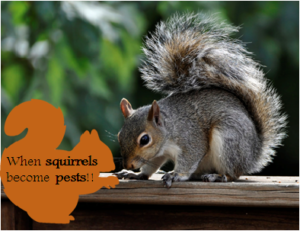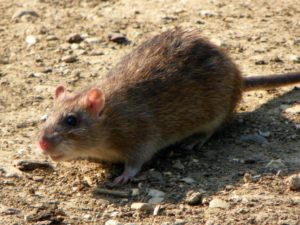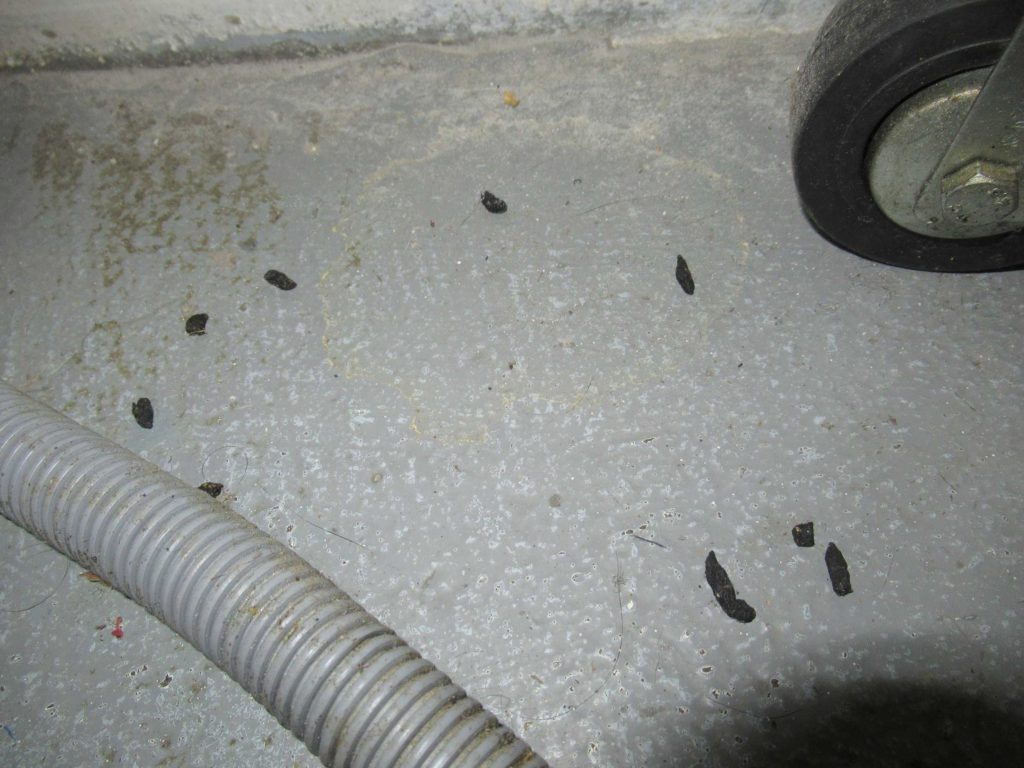 Squirrels of the order ‘Rodentia’ have 200 species and are categorized into three types: ground squirrel, tree squirrel and flying squirrel. Squirrels can be cute and amusing to watch in their natural environment. However, when they invade residential homes, destroy landscaping, eat vegetation, or scare away desirable birds, their antics quickly become less entertaining or cute. They are arboreal in nature. That means they live in trees. But they often choose to live in attics, chimneys, garage, vents etc. Any place that people live we also find them.
Squirrels of the order ‘Rodentia’ have 200 species and are categorized into three types: ground squirrel, tree squirrel and flying squirrel. Squirrels can be cute and amusing to watch in their natural environment. However, when they invade residential homes, destroy landscaping, eat vegetation, or scare away desirable birds, their antics quickly become less entertaining or cute. They are arboreal in nature. That means they live in trees. But they often choose to live in attics, chimneys, garage, vents etc. Any place that people live we also find them.
Squirrels can be found everywhere except Antarctica. They breed once or twice a year and give birth to a varying number of young ones after three to six weeks, depending on species. They have a high mortality rate during their first year and in captivity, they can live up to 15 years. Squirrels in urban areas may become so abundant and overpopulated that they begin to cause damage to trees, shrubs, ornamental plantings, gardens, crops, wires and cables etc.
Below is the table that shows the reproduction of various species of a squirrel:
| Species | Mating season
First Second |
Gestation days |
Litter size
Range│Average |
||
| Grey Squirrel | Jan/Feb | May/July | 44-45 | 2-5 | 3 |
| Fox Squirrel | Jan/Feb | May/July | 44-45 | 1-6 | 3 |
| Flying Squirrel | Feb/March | May/July | 44-45 | 2-7 | 3 |
Source: Urban Wildlife Damage Control Kansas City.
Like all rodents, squirrels also have incisors which grow throughout their life. Hence to keep them in check, they chew anything they find or smell attractive. Because of their constant chewing habit, they cause many accidents, power outages and loss to the economy. According to Level 3 Communications, squirrels do 17% of damage to fiber optic network. These ubiquitous, furry buzz incisors are most likely damaging aerial cable plant in worldwide settings, increasing maintenance expenses and reducing the productivity of technical operations groups.
Squirrels have been causing damage to wires and cables since the time Alexander Graham Bell uttered the famous words, “Mr. Watson, come here…”. Industry humorists might even postulate that Bell was calling Watson to dispatch a rodent gnawing on that first telephone cable.
Here are some news that shows how squirrels are affecting our lives:
Weather, squirrel cause power outages in Frederick
Weather, squirrel cause power outages in Frederick
By Kyle Payne | September 2, 2020
FREDERICK, Okla. (TNN) – Many people in Frederick experienced a few power outages over the weekend — and officials said the cause was a more serious problem than they originally thought.
In total, power was out for almost half a day.
Frederick’s City Manager attributes the first outage with the storms.
But the second issue, which included a damaged power switch and other damaged fuses was actually caused by a squirrel.
The replacement switch was hours away in Fairview… making this a lengthy project.
CMP: Squirrels causing power outages in Maine
By WGME│September 28, 2018
 PORTLAND (WGME) – Central Maine Power is reporting that squirrels are causing a rash of power outages in southern and central Maine.
PORTLAND (WGME) – Central Maine Power is reporting that squirrels are causing a rash of power outages in southern and central Maine.
CMP says their line workers are working to restore power as quickly as possible.
Officials say rodent interference is common and cannot be avoided.
Even if these squirrels damage our wires and cables they play a vital role in our ecosystem. They are great at planting trees. They bury their acorns, but forget where they put them. The forgotten acorns become oak trees. Hence to use toxic rodenticides to prevent damage caused by squirrels will not be an ideal solution. Also, rodenticides can harm target as well as non targeted species. They are extremely unstable and can react with the base polymer of wires and cable.
C Tech Corporation can offer a solution to overcome the damage caused by squirrels. RodrepelTM is an anti-rodent, and animal aversive which is extremely low in toxicity and extremely low hazard, environmentally safe solution. It does not kill target species but only repels them. It is engineered using a unique set of complex compounds. It follows 6 pronged strategy which is extremely effective on rodents like the squirrel, rat, beaver, gopher, paca, marmot, etc.
RodrepelTM is available in the form of a masterbatch, liquid concentrate, lacquer, and sprays.
The masterbatch can be incorporated in cable sheathing. The product in the form of liquid concentrate can be diluted in Paints and organic solvents and applied to cables. The lacquer which is a topical application can be directly applied on the already installed wires and cables.
Our newly developed products, Rodrepel™ Rodent Repellent Spray is an easy to use product which can be sprayed on wires and cables, electronic appliances, cabinets, so as to as avoid the rodents from entering them.
RodrepelTM is cost-effective, inert, thermally stable and does not degrade on exposure to heat and sunlight. It does not volatilize and does not degrade in the soil. It is RoHS, RoHS2, REACH, NEA, EU BPR, APVMA compliant and FIFRA exempted.
Contact us at technical.marketing@ctechcorporation.com if you’re facing problems with rodents and get best remedies to combat the pest menace.
Also, visit our websites:
http://www.ctechcorporation.com/
http://www.rodrepel.com/
http://www.termirepel.com/
http://www.combirepel.com/
Follow our Facebook pages at:
1] https://www.facebook.com/Combirepel-411710912249274/
2] https://www.facebook.com/Termirepel-104225413091251/
3] https://www.facebook.com/Rodrepel-120734974768048/
Follow us on our Twitter pages at:
1] https://twitter.com/rodrepel
2] https://twitter.com/termirepel
3] https://twitter.com/combirepel


 The Norway rat, roof rat, and house mouse are destructive rodent pests in and around farm facilities. This can be especially true during the winter months, as they seek food and refuge indoors. Rats and mice consume and contaminate food, gnaw on structural, mechanical, and electrical components, and weaken concrete slabs and walkways with their burrowing activities. They can also potentially carry diseases such as bubonic plague, leptospirosis, rabies, and bacterial food poisoning.
The Norway rat, roof rat, and house mouse are destructive rodent pests in and around farm facilities. This can be especially true during the winter months, as they seek food and refuge indoors. Rats and mice consume and contaminate food, gnaw on structural, mechanical, and electrical components, and weaken concrete slabs and walkways with their burrowing activities. They can also potentially carry diseases such as bubonic plague, leptospirosis, rabies, and bacterial food poisoning.

